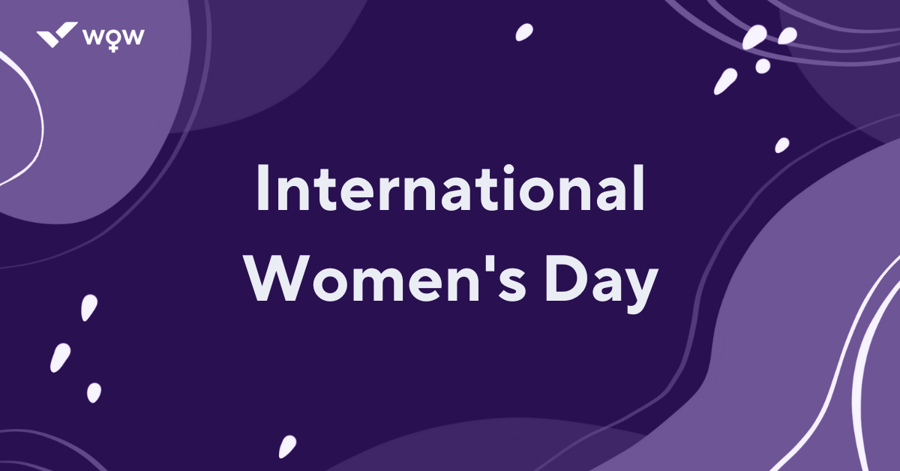Key takeaways:
- What is generational diversity in the workplace? It’s a mix of age groups that influences behavior, communication, and collaboration styles.
- How can teams manage generational differences? Establish clear communication guidelines and respect individual preferences while fostering inclusivity.
- What are common characteristics of each generation? Gen Z values diversity; Millennials prioritize performance; Gen X seeks flexibility; Baby Boomers emphasize work ethic.
- Why is it crucial to avoid stereotyping? Stereotyping can lead to misunderstandings and hinder collaboration. Emphasizing individual strengths fosters a more cohesive team.
- How can organizations motivate multi-generational teams? Understand unique needs, promote mentorship, and create opportunities for bonding to enhance team dynamics.
Having different generations in the workplace is common these days. In most cases, team members of varying ages work together on the same project or task. Others may even manage multiple generations of workers at the same time.
This article aims to help people who work with and manage different generations in the workplace by developing a fair strategy that takes their unique qualities into account. We’ll also explain how to avoid making mistakes and dealing with multi-generational issues that may be new to you so that your entire team can feel comfortable at work.
How generational diversity looks in the workplace
The generational gap occurs when people are born at different times. It can affect how people behave and think at work.
For example, members of the silent generation are typically portrayed as being very conservative, while baby boomers are likely to have more liberal fiscal tendencies. Although everyone is an individual with a unique personality type regardless of age, you may see common traits associated with each generation play out right in front of you.
There is a lot of common ground between different generations in the workplace. Most of us like to feel valued at work. We also enjoy feeling as if we’re making a difference and doing something meaningful for ourselves and others.
And yet, teams with generation gaps can face challenges that relate to their ages while collaborating.
Why? Having different generations in the workplace means that company culture and communication is not one size fits all across the board. Don’t force people to fit in the same work environment. Instead, set up guidelines that will allow everyone to feel comfortable.
Another solution is to consider what values and habits each generation has to offer in a team setting.
That’s not to be confused with stereotyping. Putting each generation into a box often encourages counterproductive assumptions. While it’s true that working with different age groups can be challenging, it can also teach employees about differences in their abilities and attitudes.
Here are the generations you may see in the workplace today and what defines them:
- Generation Z
Gen Z is focused on core values of being smart, funny, and witty. They may also consider diversity to be an important consideration for hiring, especially at the management level. Gen Zers want to work with like-minded individuals who share similar goals and values. This generation’s managers should help them develop and grow by providing them with the right support and resources. - Millennials
Performance is very important to millennials. They are more concerned with the quality of their work than the number of hours they put in. To ensure that they are being treated fairly, managers should communicate honestly with their employees. The idea of an “always-on” work culture is not acceptable to most. - Generation X
Gen Xers are known to be individualistic, having been former latchkey kids. They may also prefer to manage their work and physical and psychological space in a more flexible manner. As a result, they often prefer to work with less supervision and are more comfortable communicating with others through various forms of media such as email and Facebook. Flexibility and a solid work/life balance are non-negotiable for this generation. - Baby boomers
Baby boomers are known for their work ethic and goal-oriented processes. They value face-to-face interaction and traditional recruitment methods. Structure, reliability, and flexible work policies are all ideal for this group. Acknowledgment for their skills and hard work will go a long way with this generation, although most employees would likely be grateful for that too.
While we’ve mentioned some tips for each already, it’s important to listen to the different work styles of multi-generational employees and communicate with them through various channels regardless of their age. Even the smallest details can make a significant impact on their work experience.
Take onboarding for example. While some generations may prefer to receive information via email, others may ask to see printed copies of pamphlets and manuals.
How do you manage a generation gap in the workplace?
There are many differences between generations. While many people can agree that working together is beneficial, others believe it can be problematic. Managers must ask themselves: with the rise of multi-generational work environments, how do we work together seamlessly?
Regardless of our age or experience, everyone wants respect. In order to succeed, older generations need to respect their younger colleagues and vice versa.
While it may seem like a challenge at first, managing different generations in the workplace has its benefits. Generational diversity can help people develop new ideas and improve their work. It can also make managing other types of diversity and inclusion an action step rather than an idea.
As you begin to develop your strategy, it’s wise to work with the group on issues that affect everyone. For example, creating stress-relieving fundamentals can help businesses retain employees and attract new ones companywide regardless of age.
What are the challenges of working with different generations?
Intergenerational conflict has been a growing issue over recent years. Concerns over climate change and political unrest have, in some cases, made conversations between different age groups a bit standoffish at best and downright hostile at worst.
When there are many different generations in the workplace, there is a real risk of conflict and misunderstanding. Make sure you have a clear communication plan with everyone’s preferences laid out ahead of time. You’ll also need a documented and fair system for how you’ll address missteps between team members.
Another one of the challenges of working with different generations is compensation. Different phases of an employee’s life may affect their compensation and benefits package. Younger employees may also be focused on training opportunities or flexible work days since their entry-level wages are assumed to be low.
On the flip side, older generations may expect and take pride in handling more complex or senior-level tasks. This is because their compensation packages tend to be higher and would match the workload.
Understanding how compensation levels also affect how different generations think and feel about each other in the workplace will help managers better understand their teams.
How should you handle generational issues in the workplace?
If you’re of a younger generation and you are placed in a management position, there’s a chance that you’ll be overseeing older, more experienced (and sometimes more qualified) colleagues. To navigate this, you’ll need to establish trust in yourself and in others. This is especially true for anyone working under you who already has experience in leadership.
If you’re of an older generation and you are placed in a management position, understand that there may be younger employees who have a different way of problem-solving or communicating than you do.
Speaking of communication, how team members communicate is different for different generations. For instance, younger team members tend to use more slang and abbreviations in their messages. Older team members are more likely to use emojis in their communications. These seem innocent at first but can create rifts between members if not acknowledged upfront.
For example, an older team member sending a thumbs-up emoji may seem like a friendly confirmation that they’ve received a message. But to a younger team member, it may come off as condescending or even angry.
Getting everyone on the same page about communication style will go a long way towards resolving and even preventing issues like this.
The same applies to your communication with the rest of the team. Sticking rigidly to your own preferred means and style of communication can alienate others, even as a team leader.
Try to modify your message to suit the needs of whichever generation you’re speaking to in that moment.
But no matter how much you prepare, you may find that you make a mistake here and there. When that happens, simply remember to be understanding and graceful with how you handle the situation.
How to create a strategy for motivating different generations in the workplace
1. Do your research
Understanding what makes other generations tick can help avoid division and conflict. There are many different ways to work and each generation has its own needs and wants.
For example, many Generation Xers are known for being devoted to helping older adults and their children. So incentives revolving around health insurance benefits or anything else that directly supports the goals they have for their loved ones is a major plus.
On the other hand, members of Generation Y enjoy being sociable outside of work and believe it is important for their careers. Opportunities for networking are more often than not a success with this group.
2. Consider the viewpoints of each team member
Despite best intentions, there are many ways that ageism and cognitive bias toward different generations can show up in the workplace, such as stereotyping co-workers based on how they dress or their social media usage.
If you notice or hear about intergenerational stereotyping among your colleagues, don’t be afraid to start a dialogue about it. Emphasize the idea that, instead of assuming that everyone is the same, employees should try accepting others based on their merits and contribution to shared projects.
3. Strategically place different generations on projects together so that their work complements one another
For example, baby boomers can pass on their knowledge and experiences to Generation Y with digital tools and systems that Generation Z sets up for them. Remember that successful multi-generational teams are built on the strength of their individual performers.
One way you can manage this step is by using a project management tool such as Wrike. In Wrike, users can signify which employees possess what skills and assign them to projects accordingly. This can also be used to view individual employee workloads across all active projects.
4. Never assume that an employee will have certain skills or abilities just because of their age
This assumption most often shows up when technology is involved. Give everyone the opportunity to demonstrate what they are capable of and go from there.
5. Go out of your way to help employees bond with teammates of different generations
Monthly mentoring sessions are a great example of this. This will encourage employees to share knowledge and be more open to learning from one another.
By the way, mentoring doesn’t necessarily have to be one older person coaching a younger person. You can throw out conventions and offer mentorships led by the younger generations in the office too.
If mentoring doesn’t apply to your field, try building up a social calendar. Plan team-building activities and happy hours so people can get to know each other. Team members will get the opportunity to appreciate each other more outside of email and Slack.
Finally, find the similarities and preferences the different generations do share and use them to form the basis of your managerial choices. For example, if both your millennial and your Generation X employees prefer one-on-one performance feedback, adding that to your strategy will help.
In conclusion
At the end of the day, the key to understanding and respecting other generations is to accept that they are different from you. It’s always important to acknowledge individual strengths, weaknesses, and skills, regardless of how old a team member is. With the right strategy, you can reap the benefits of a multi-generational workforce and build a stronger foundation for long-term success.









